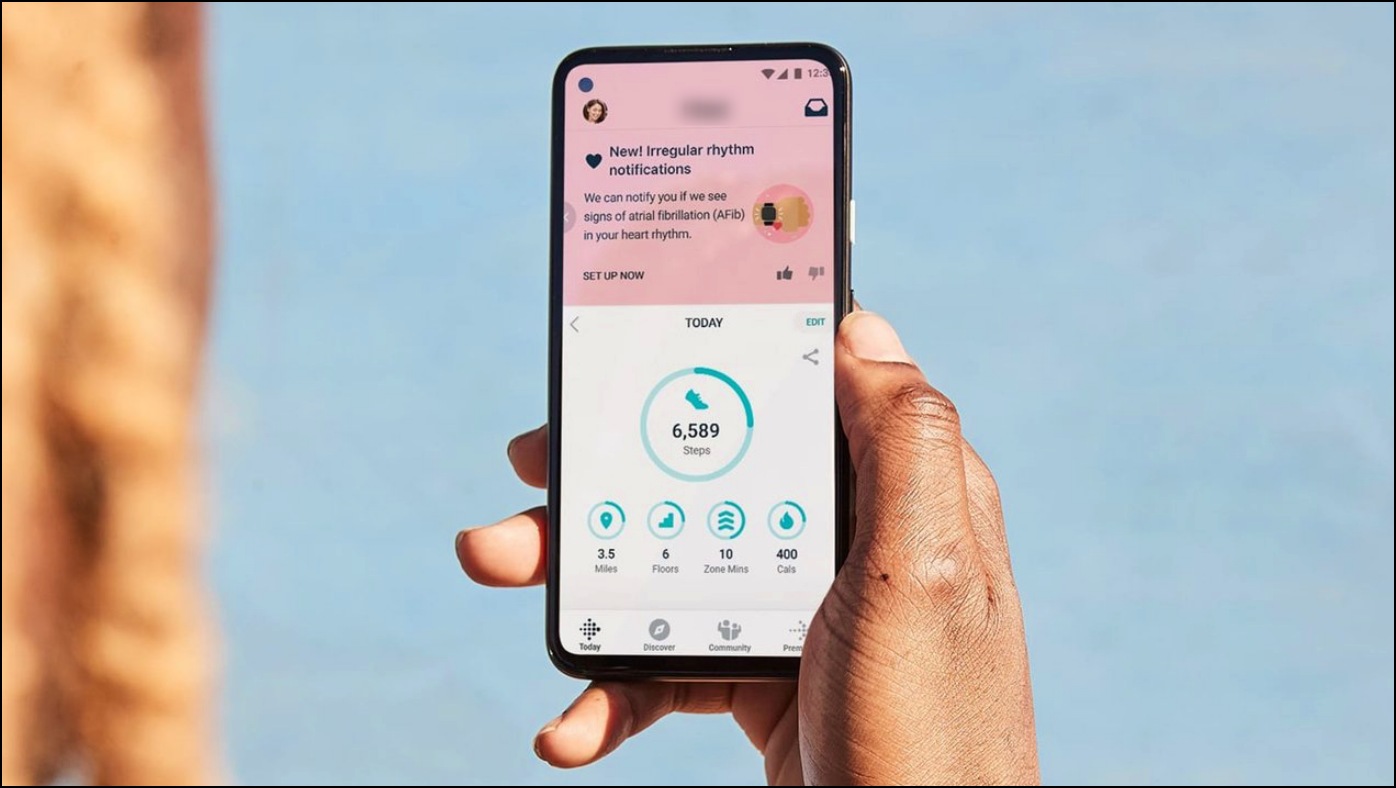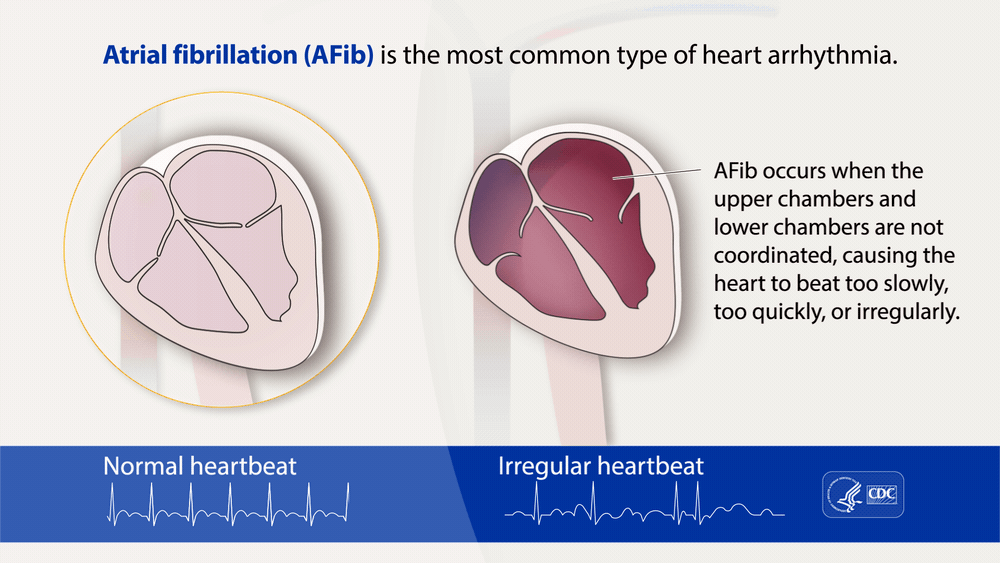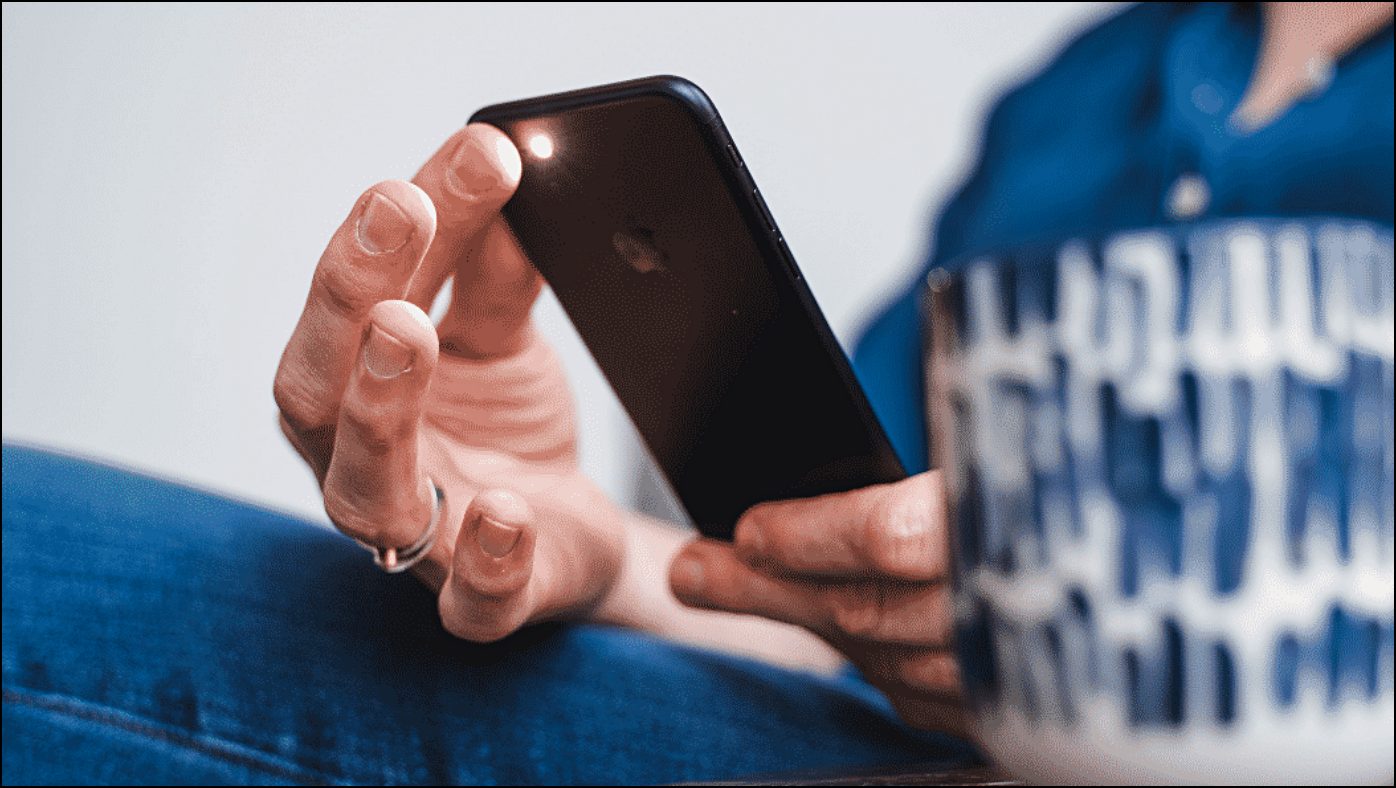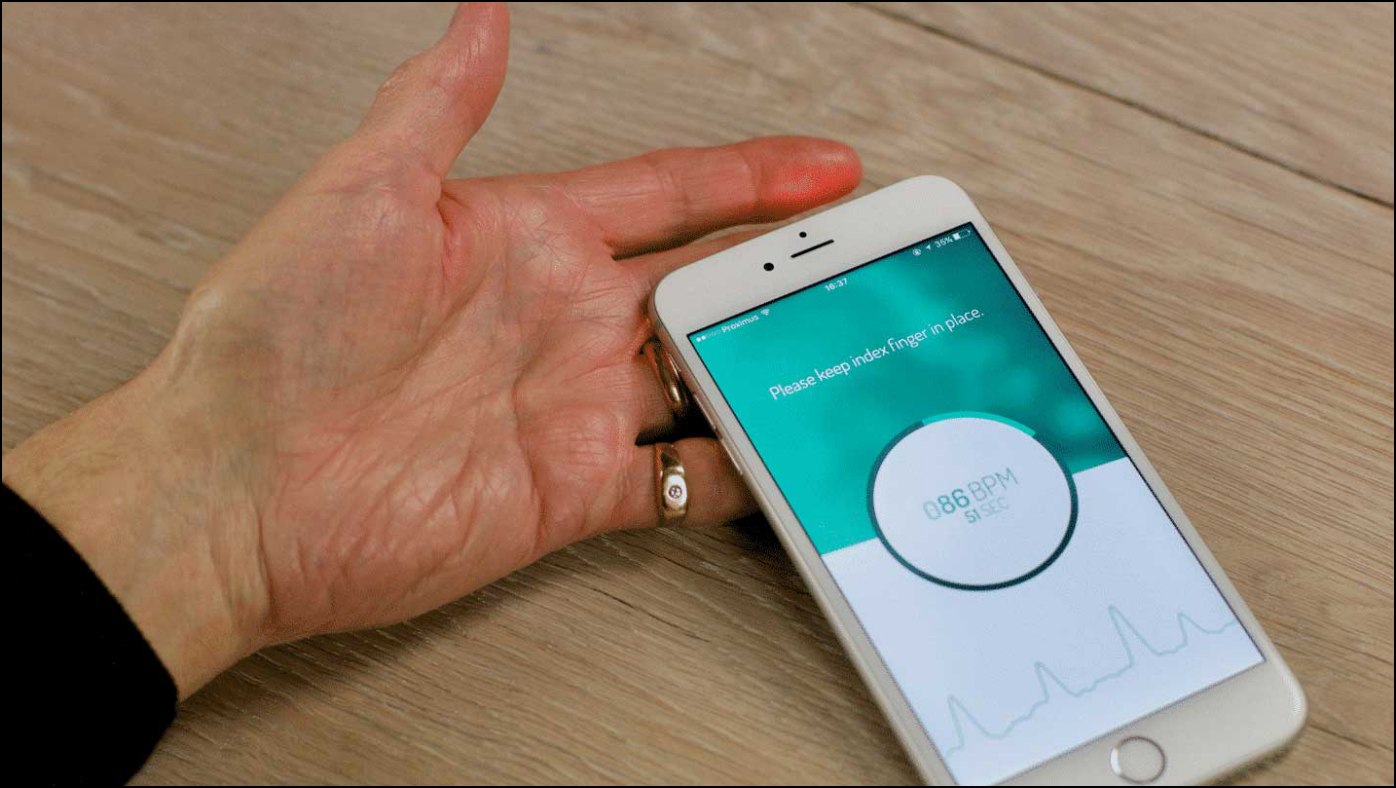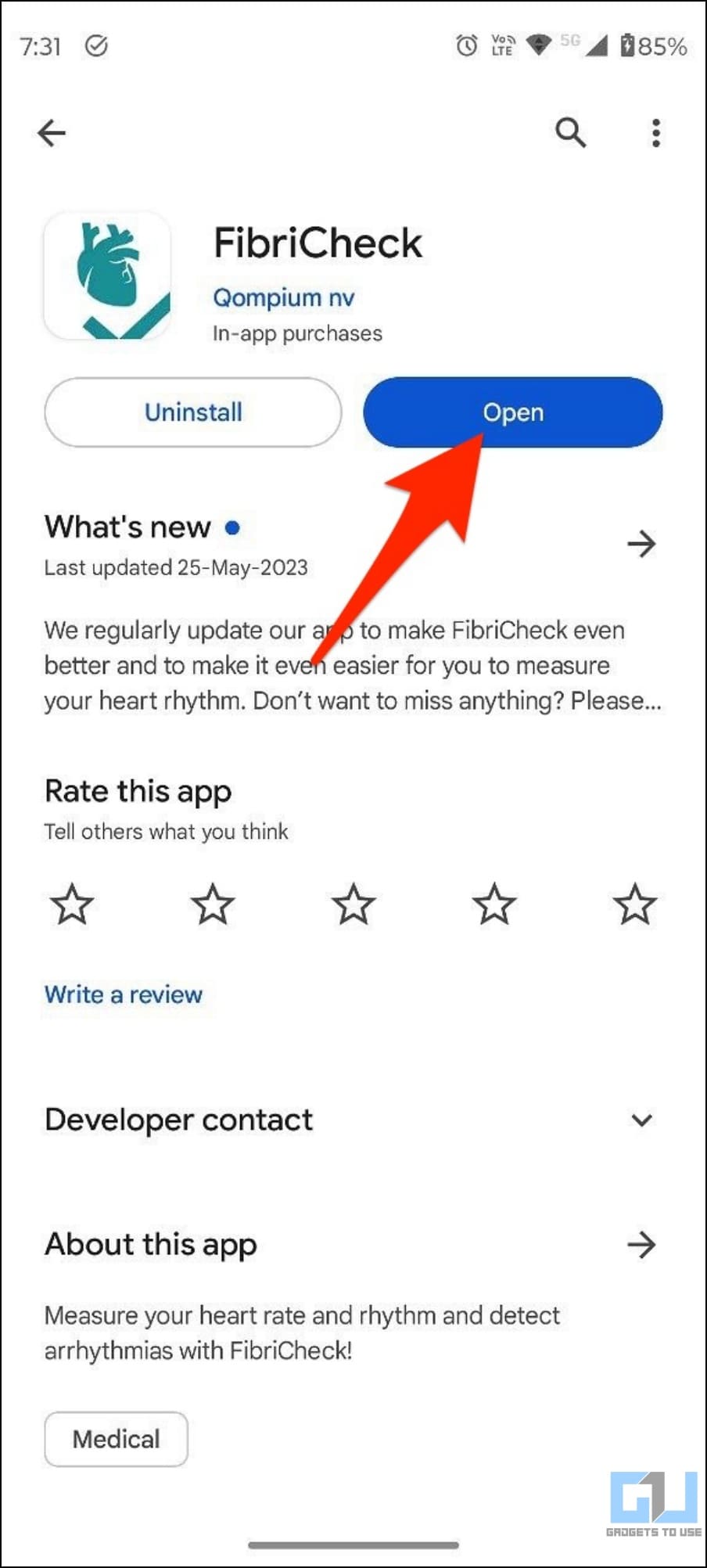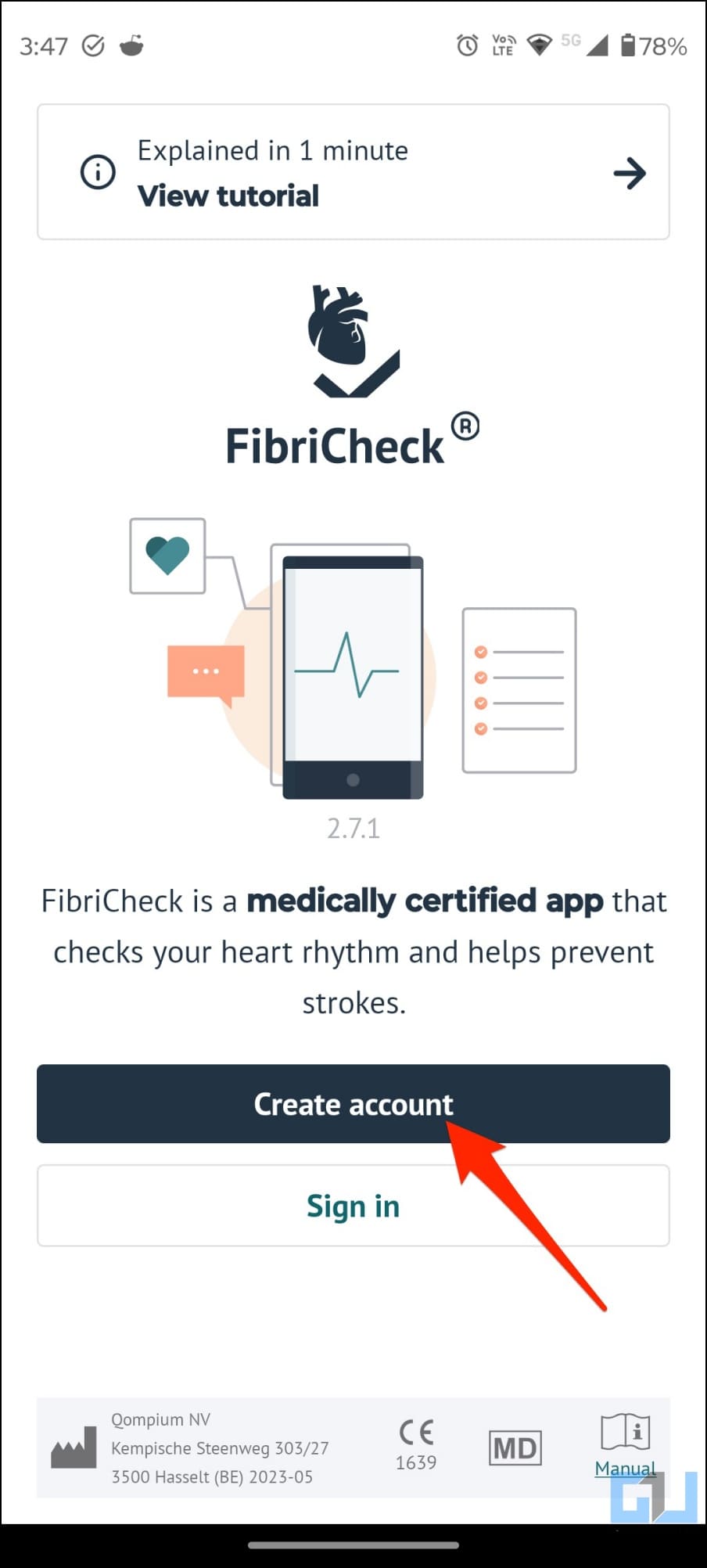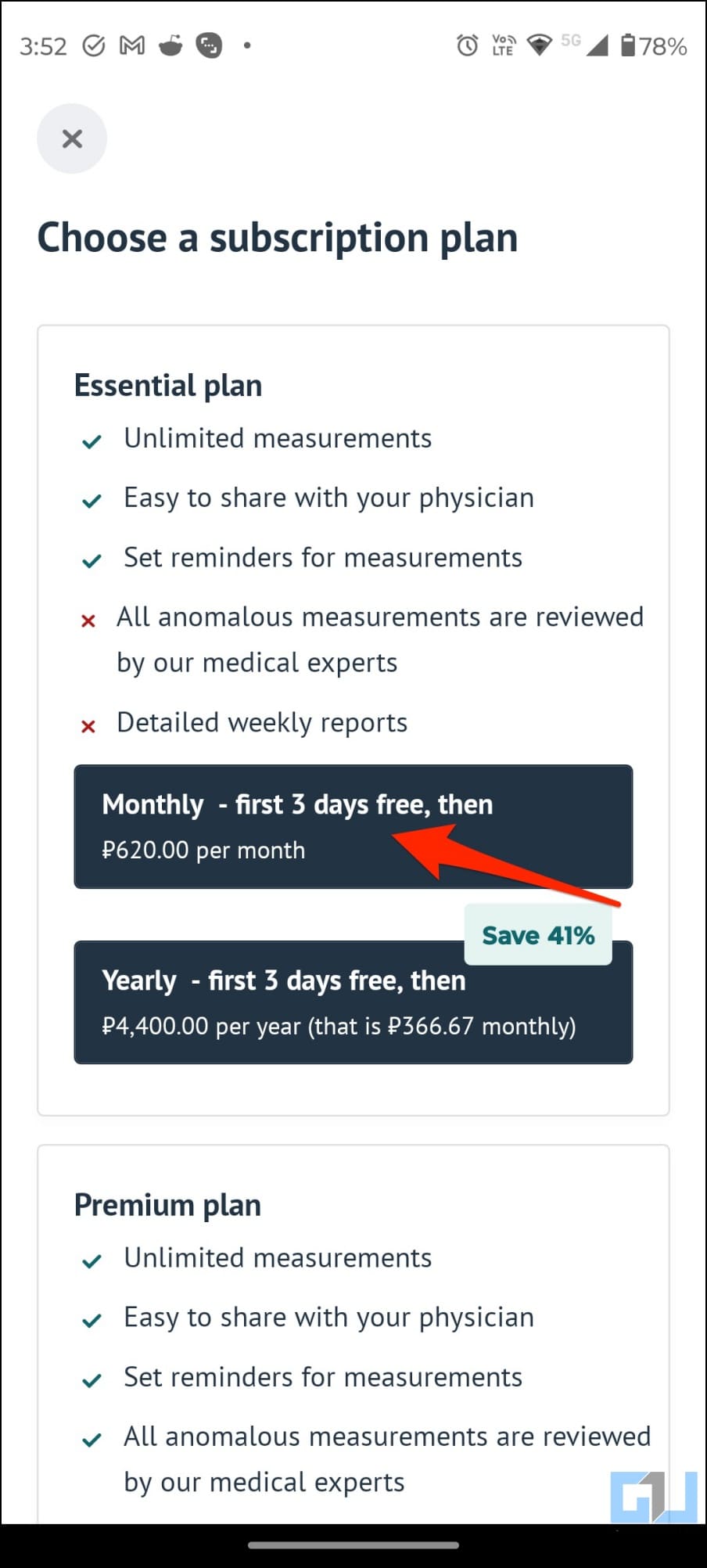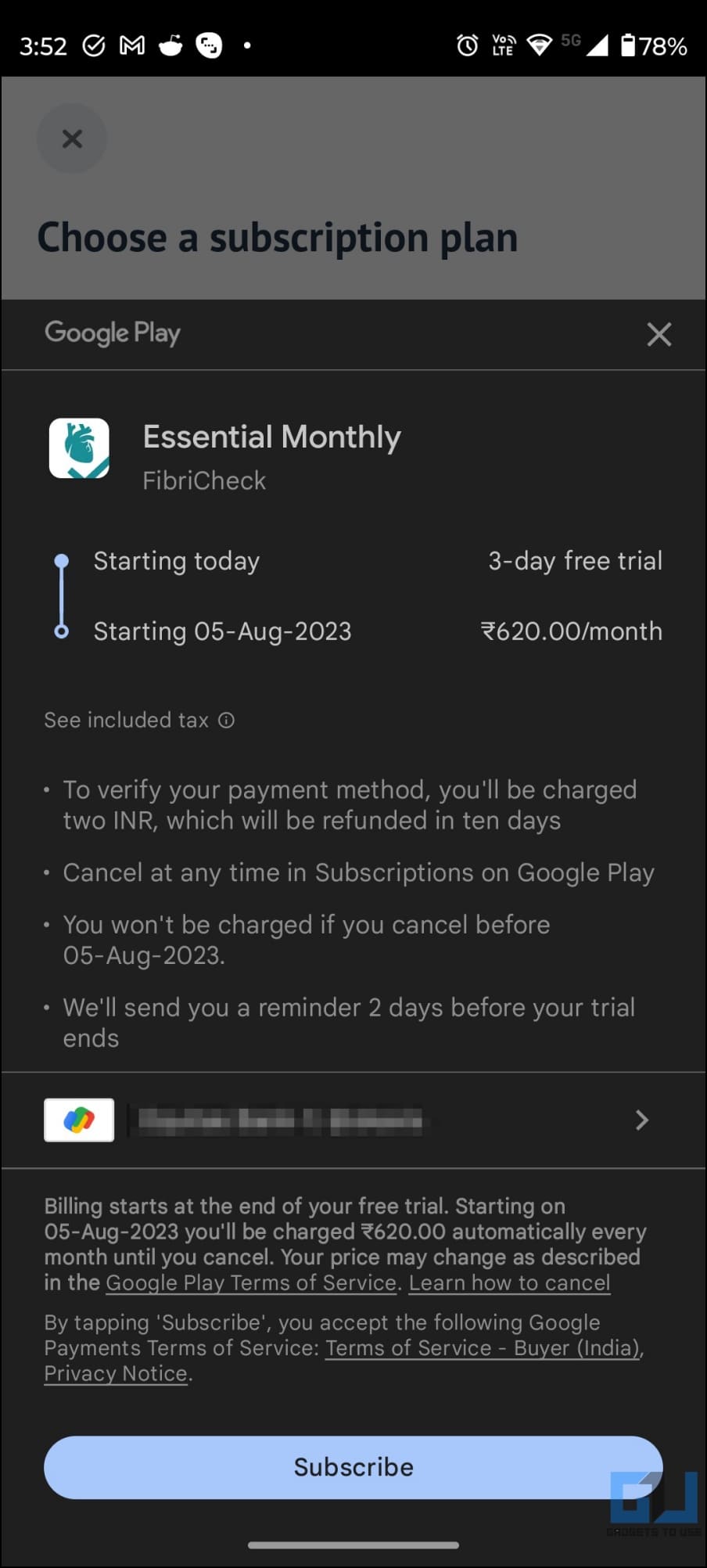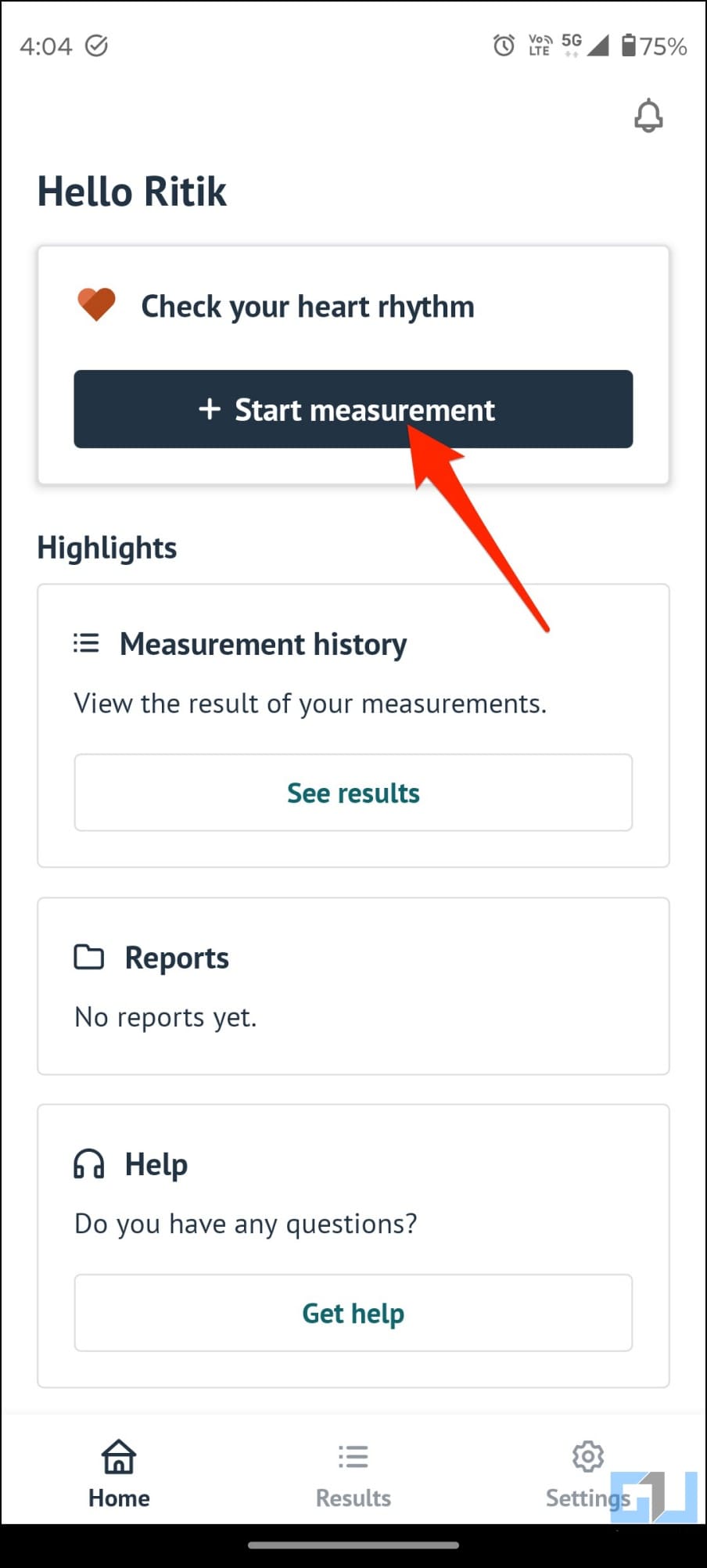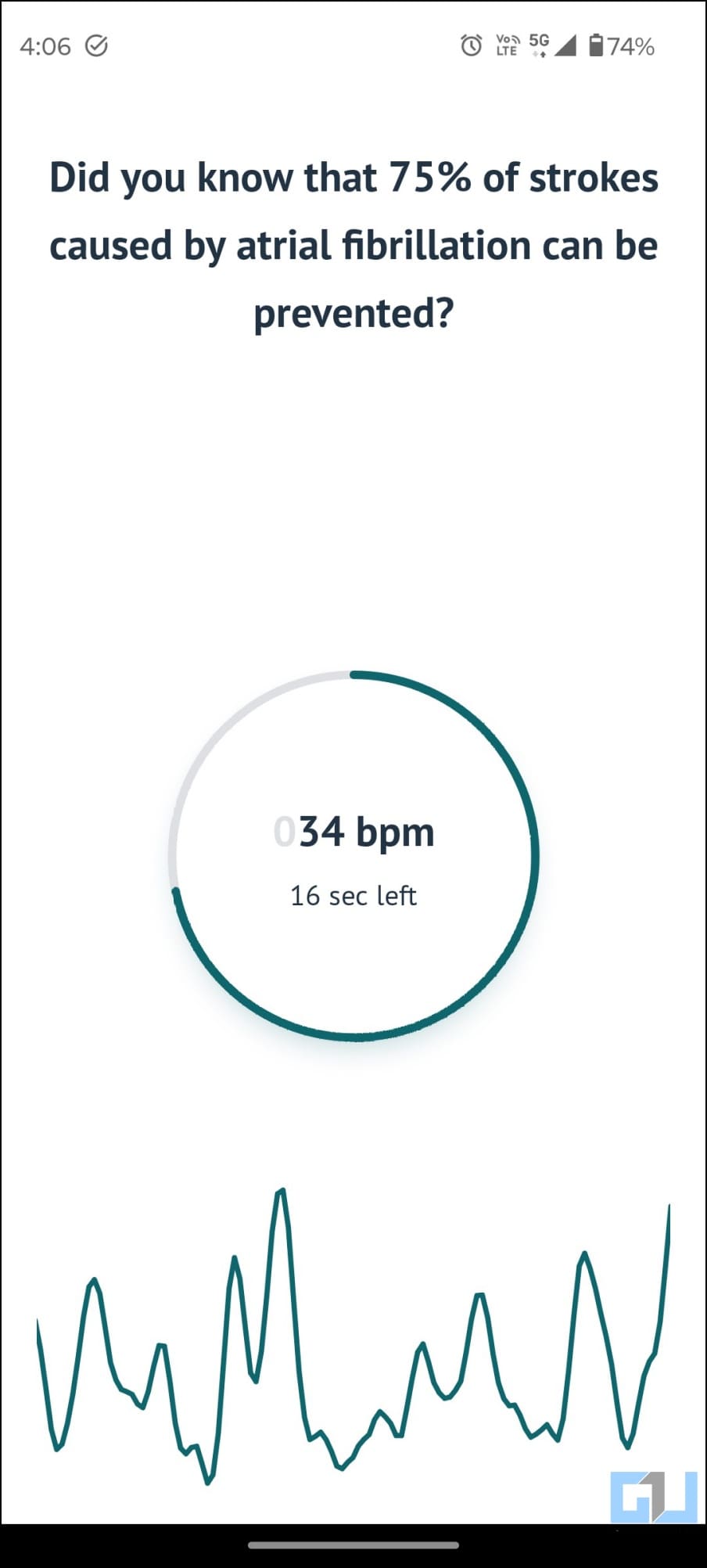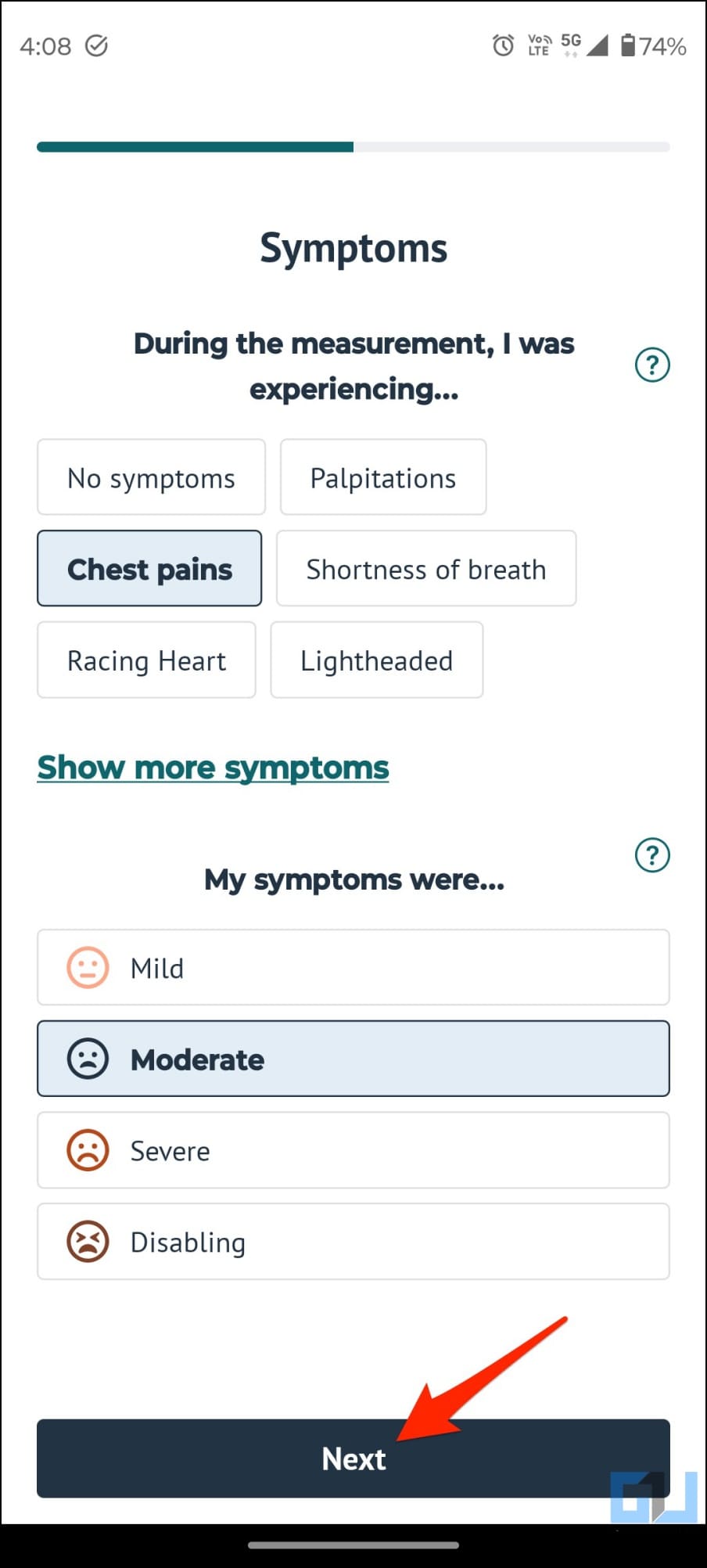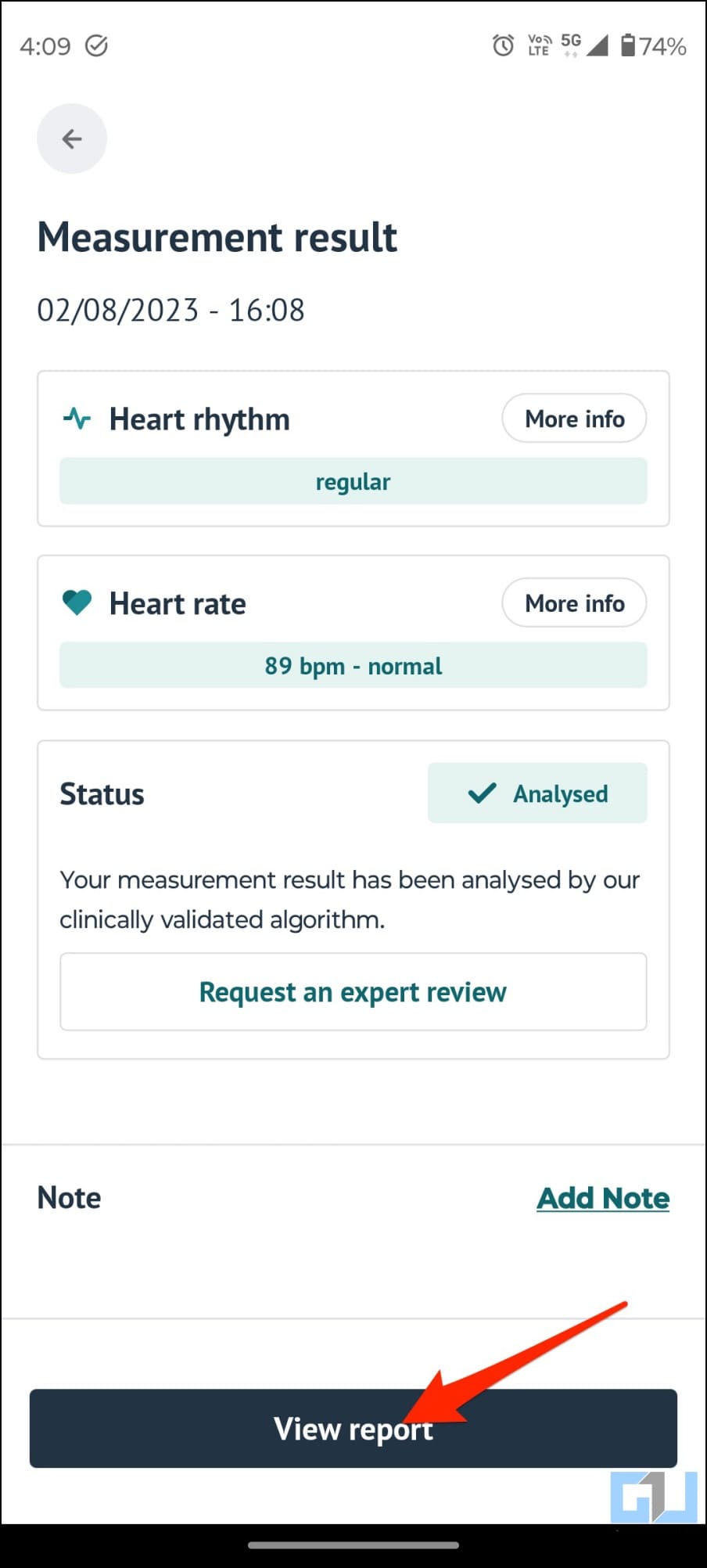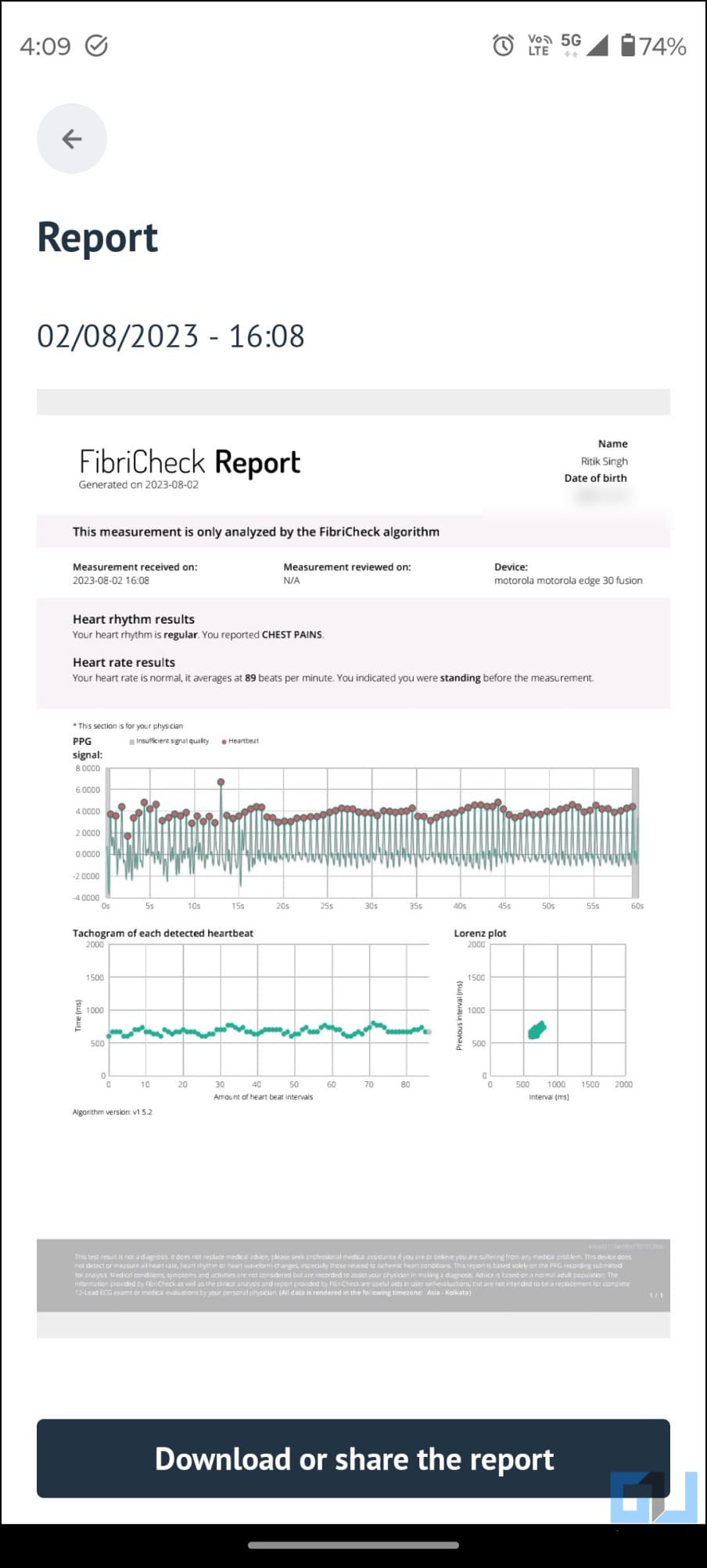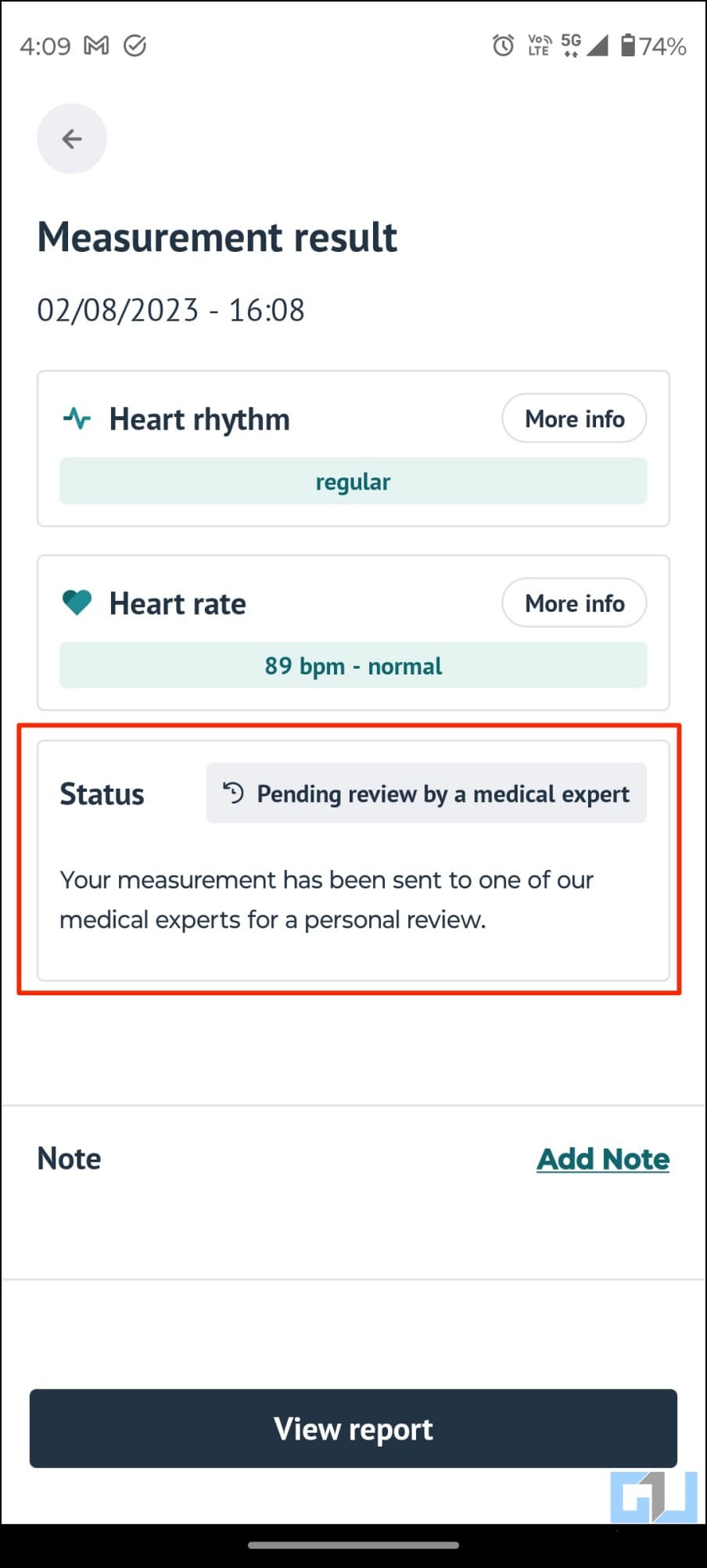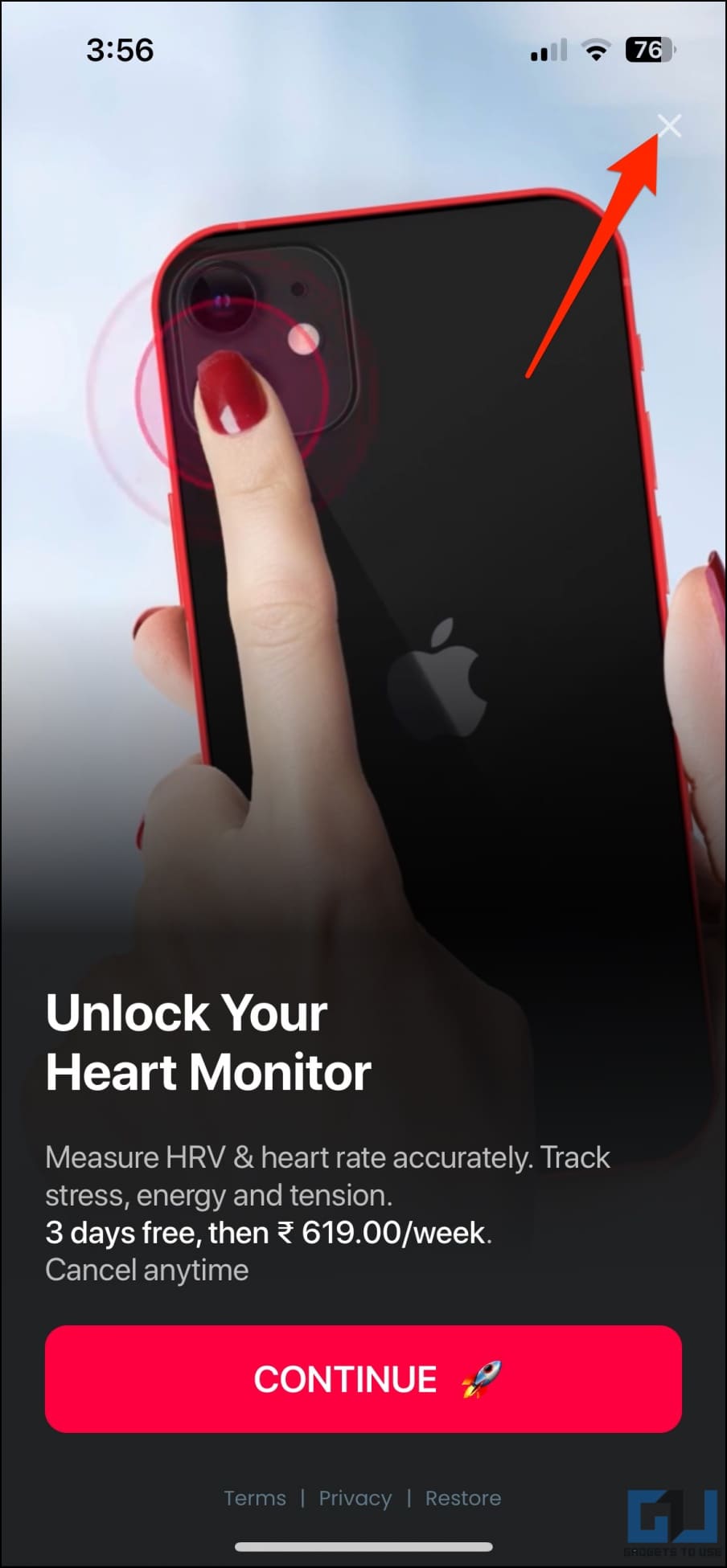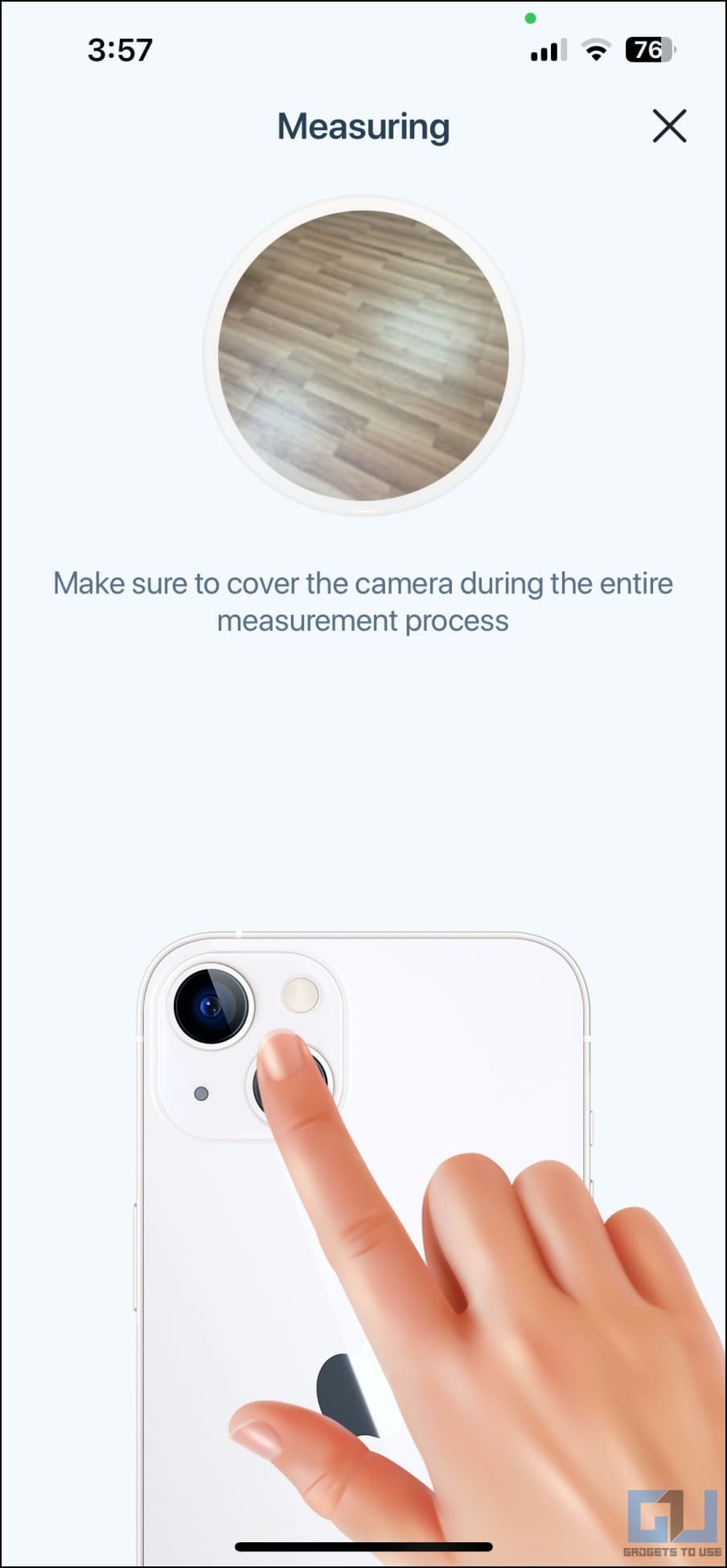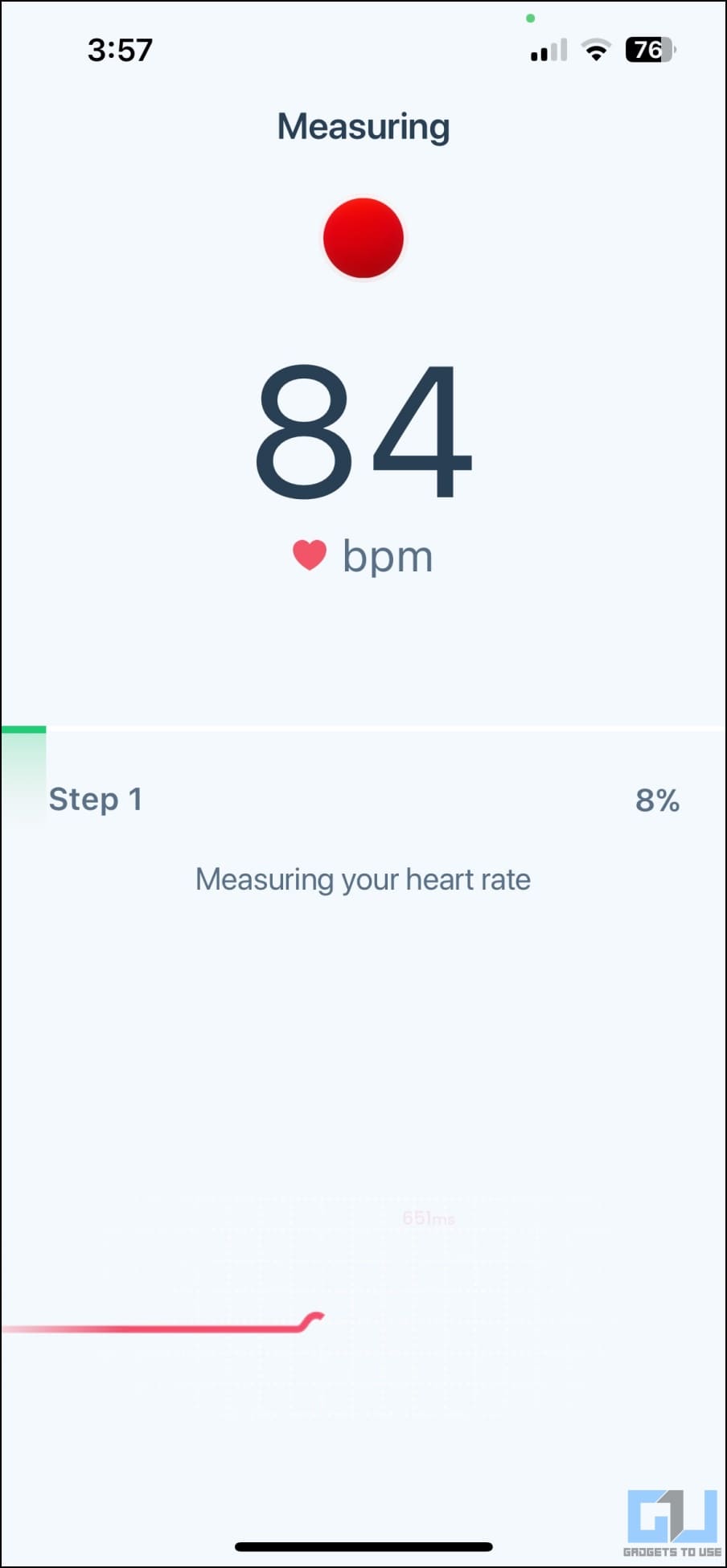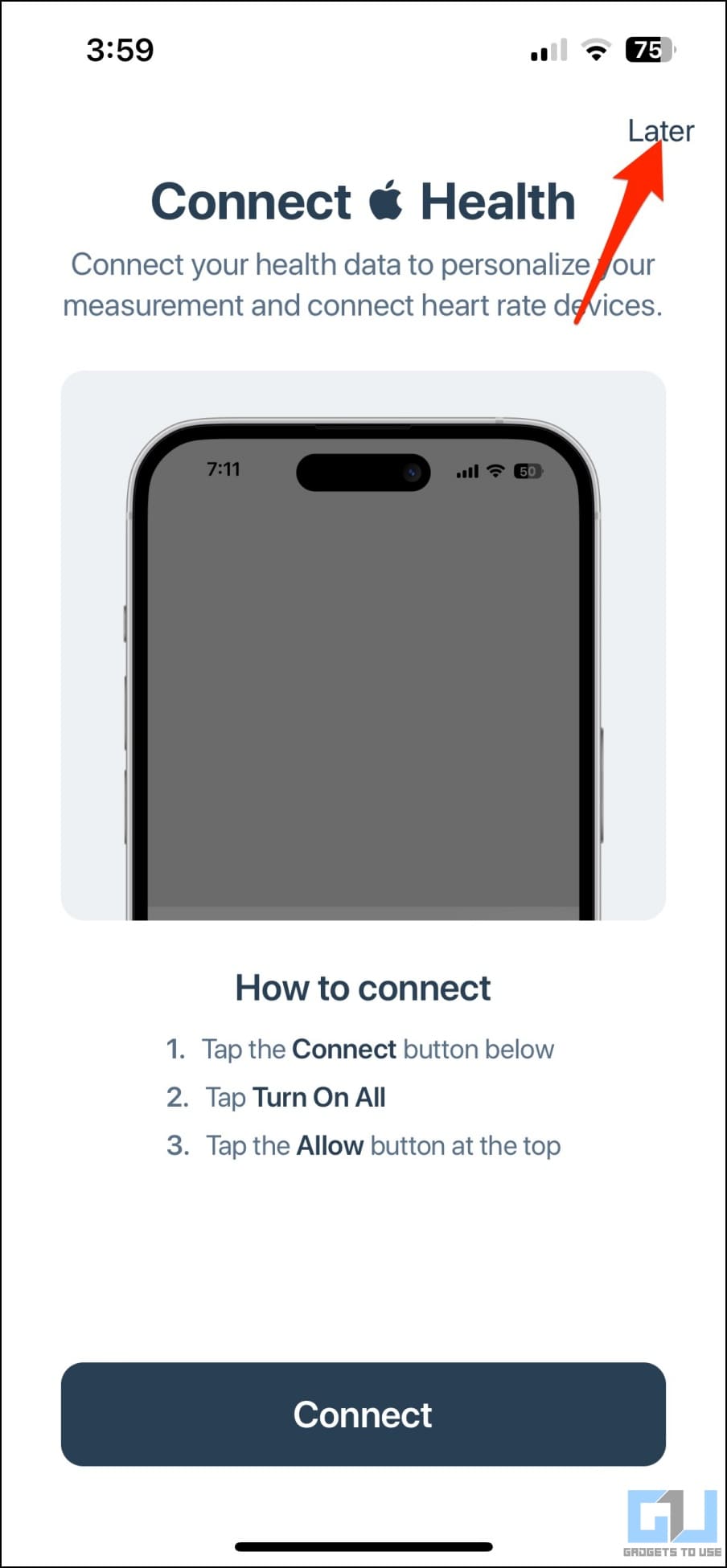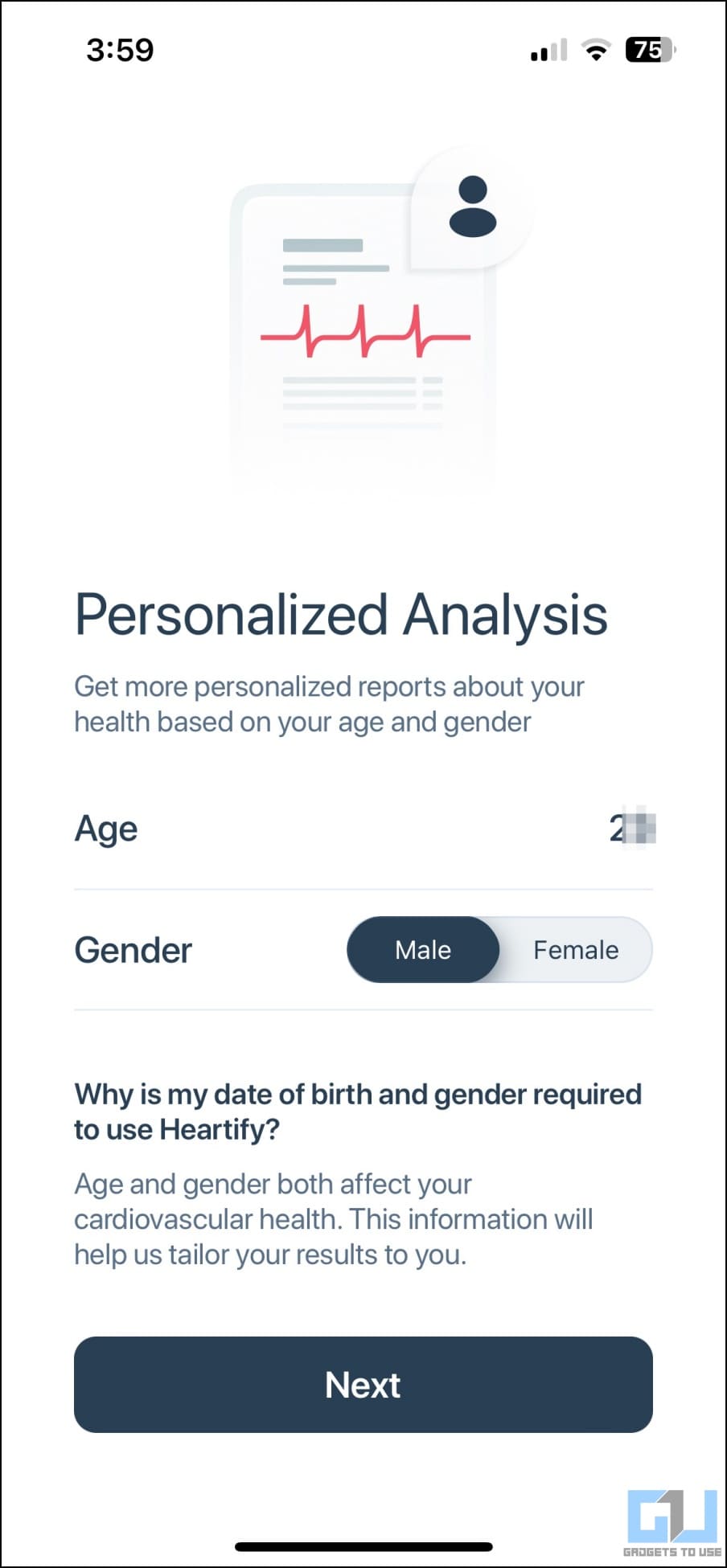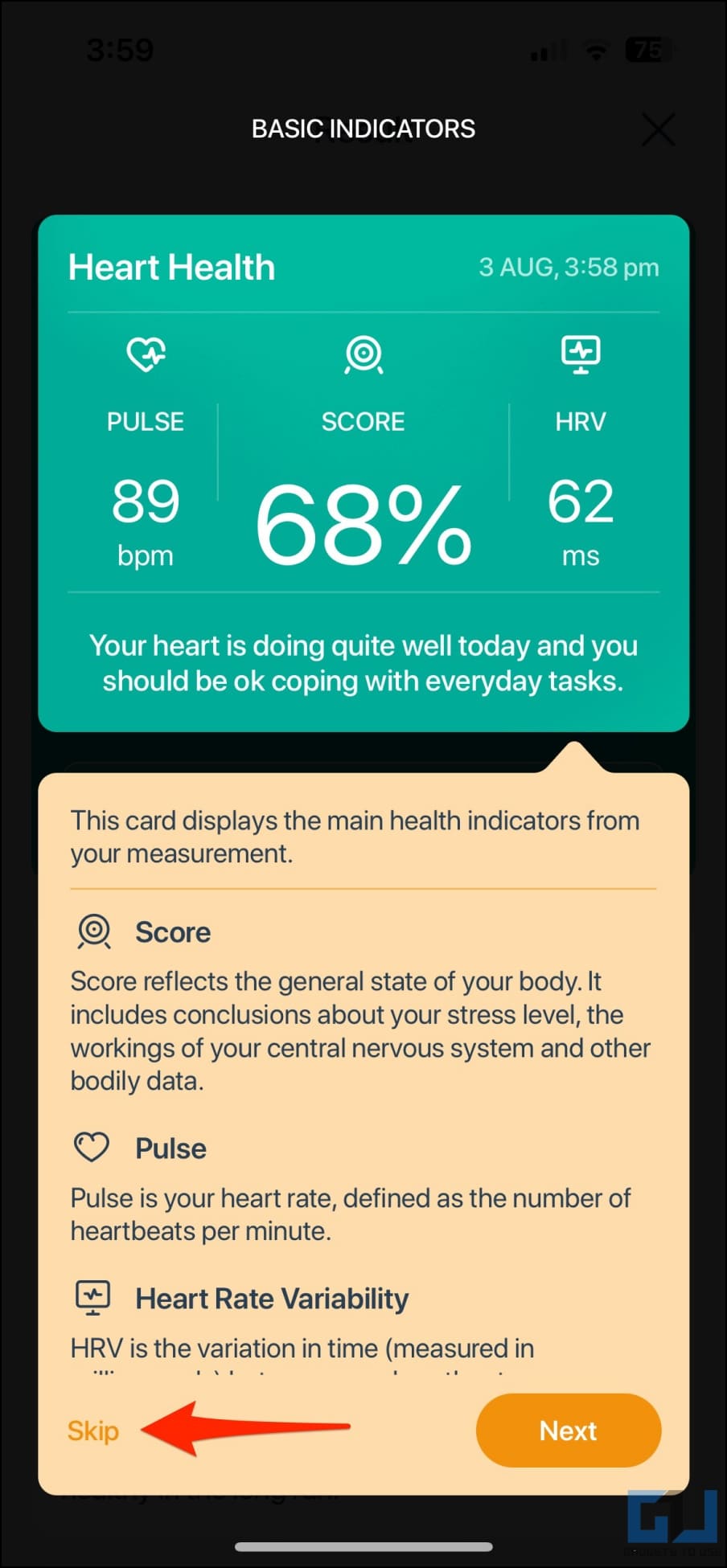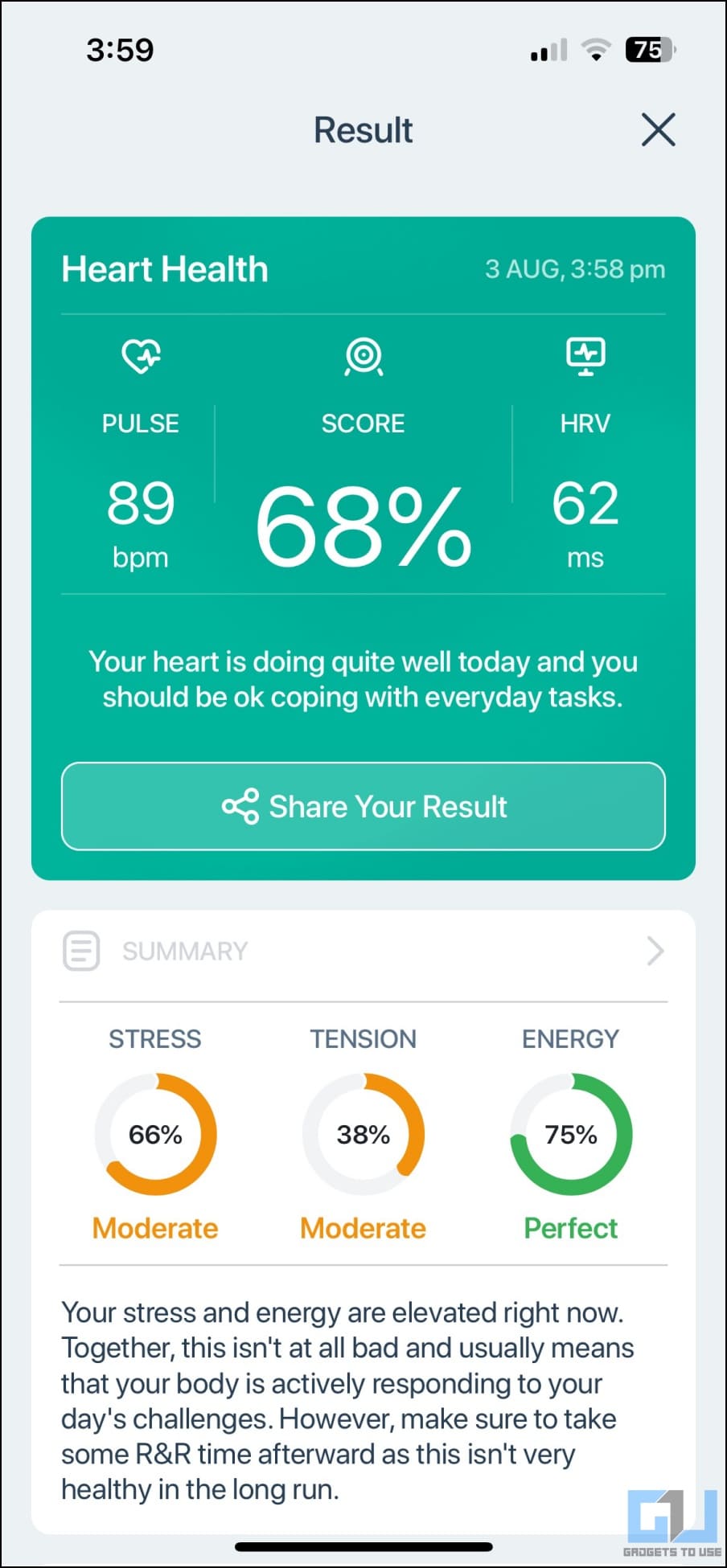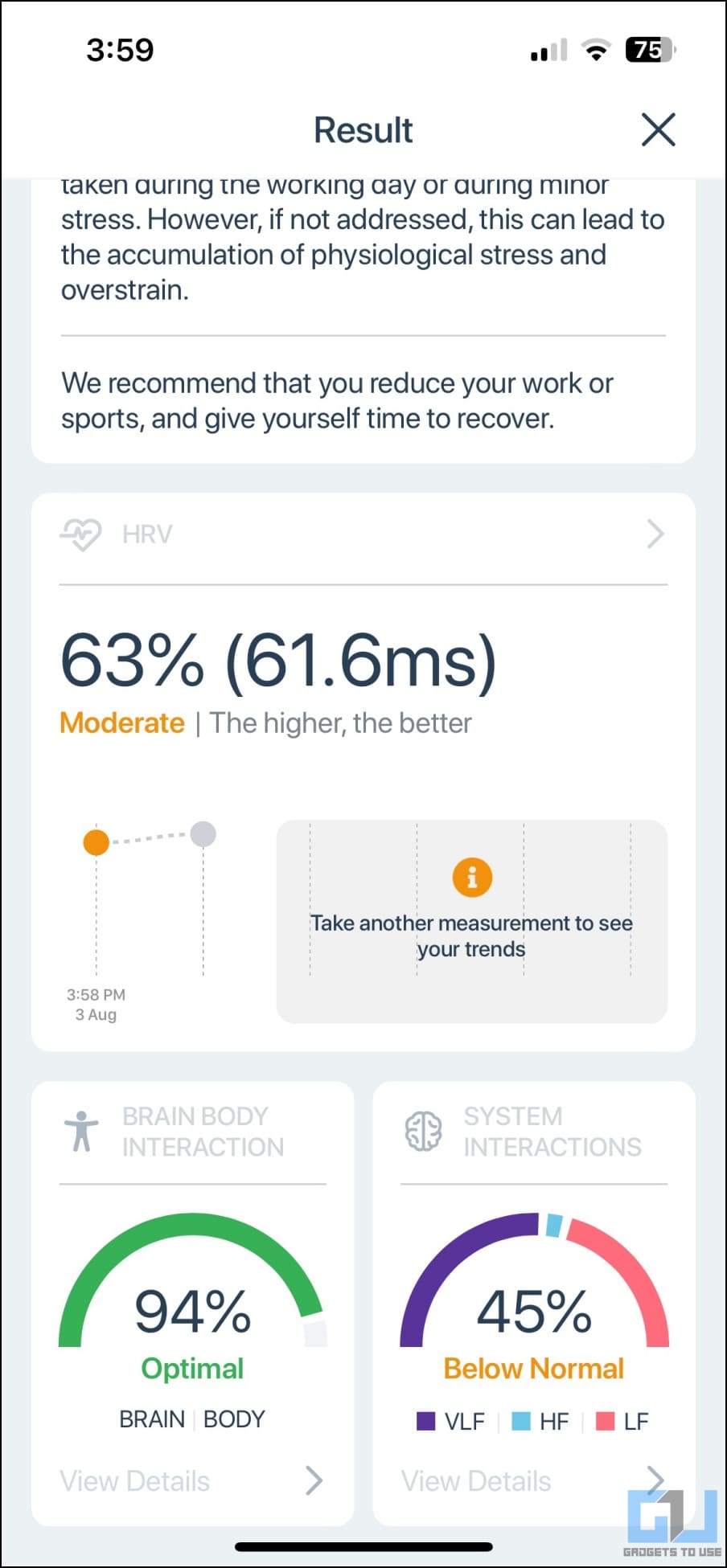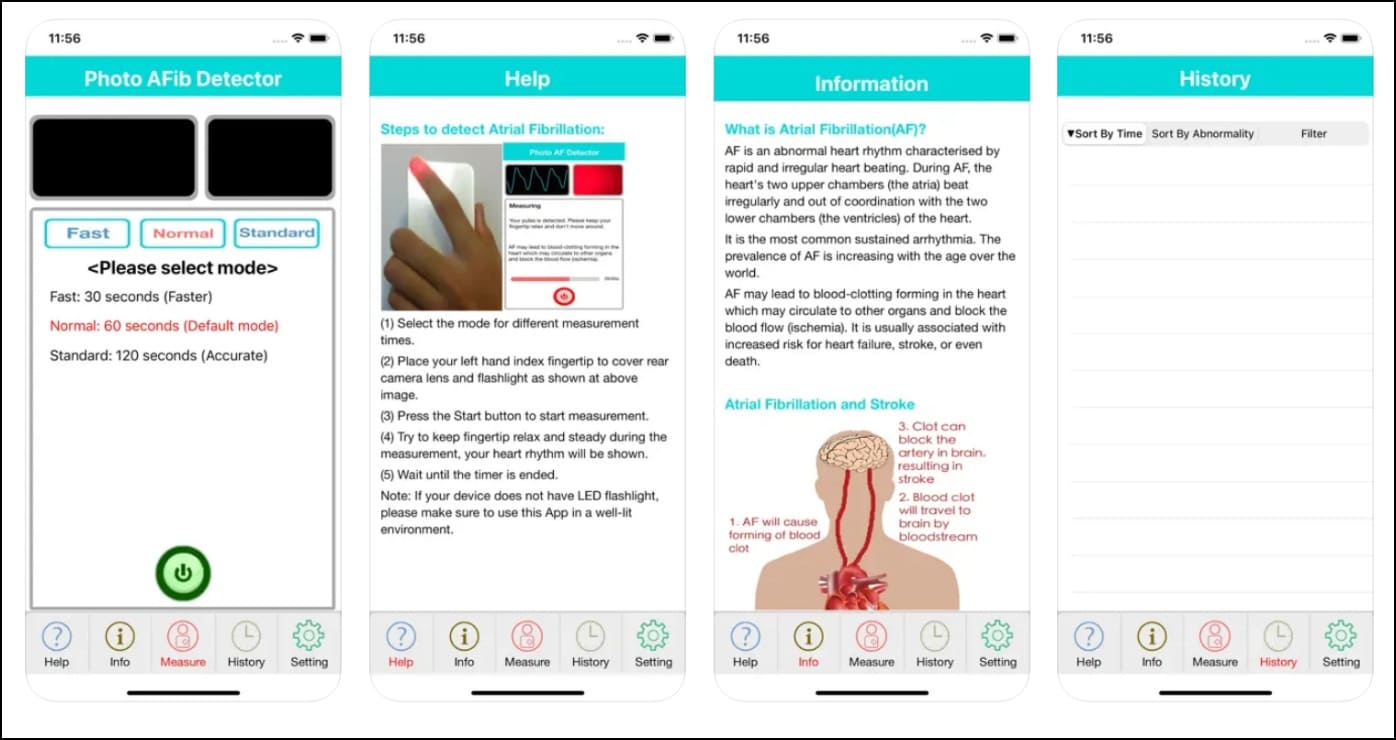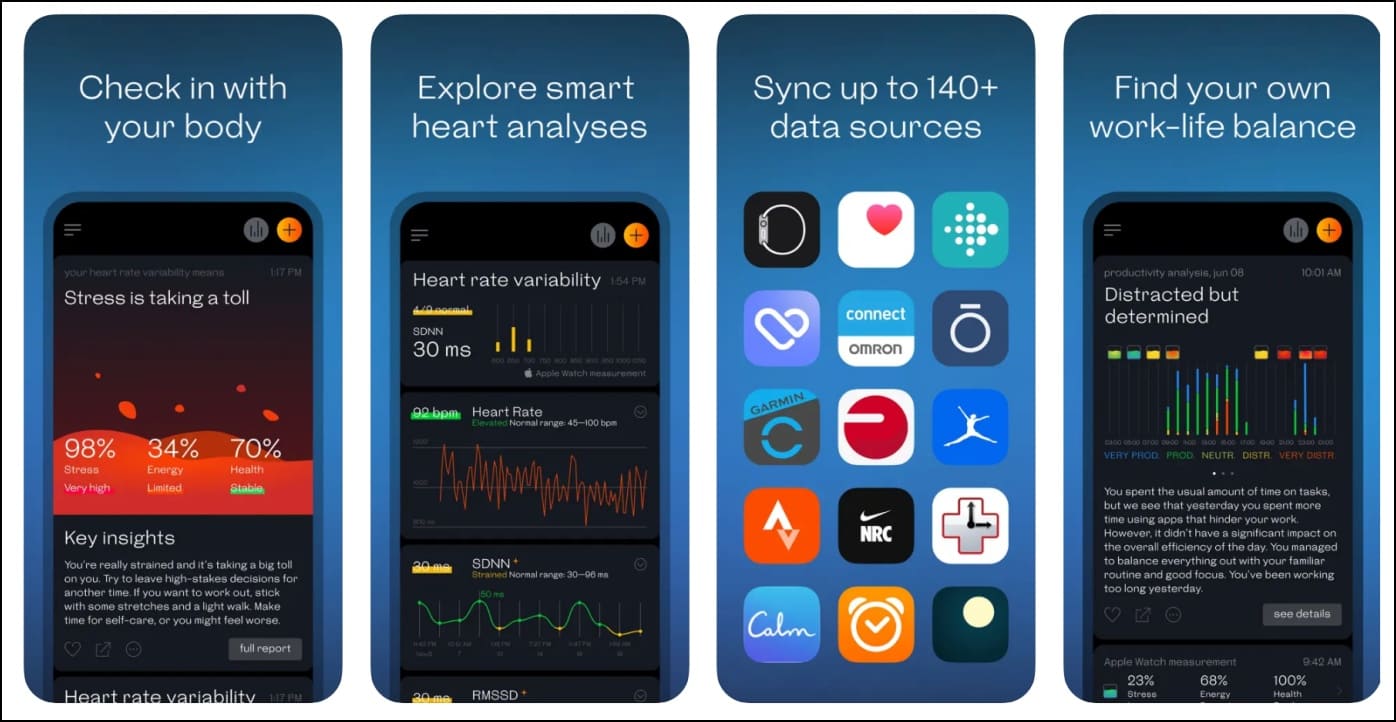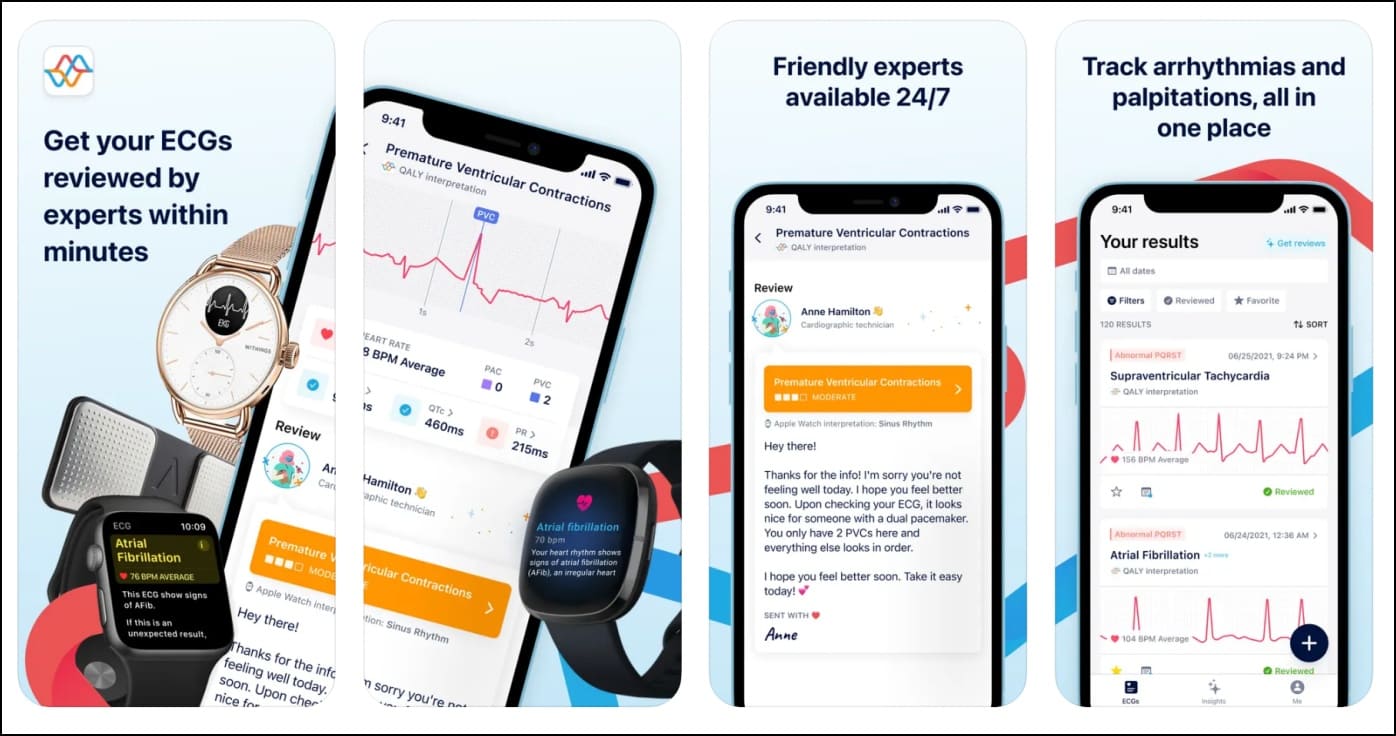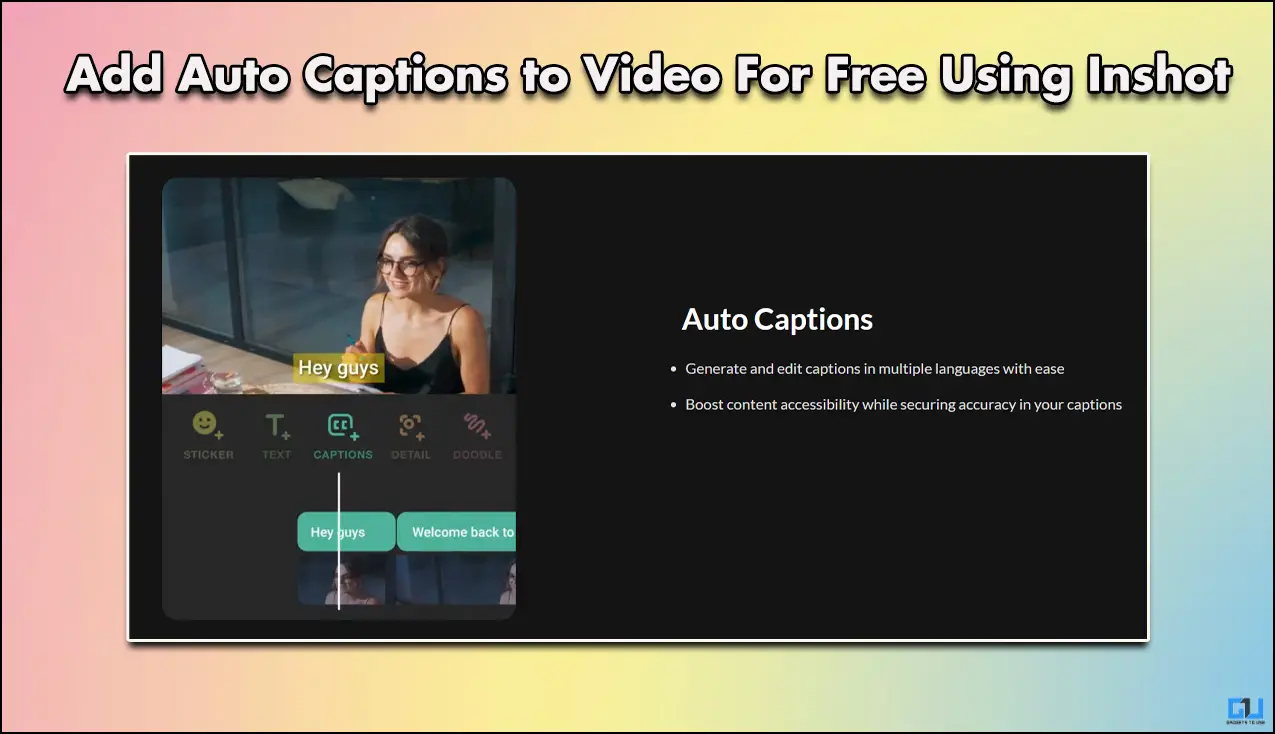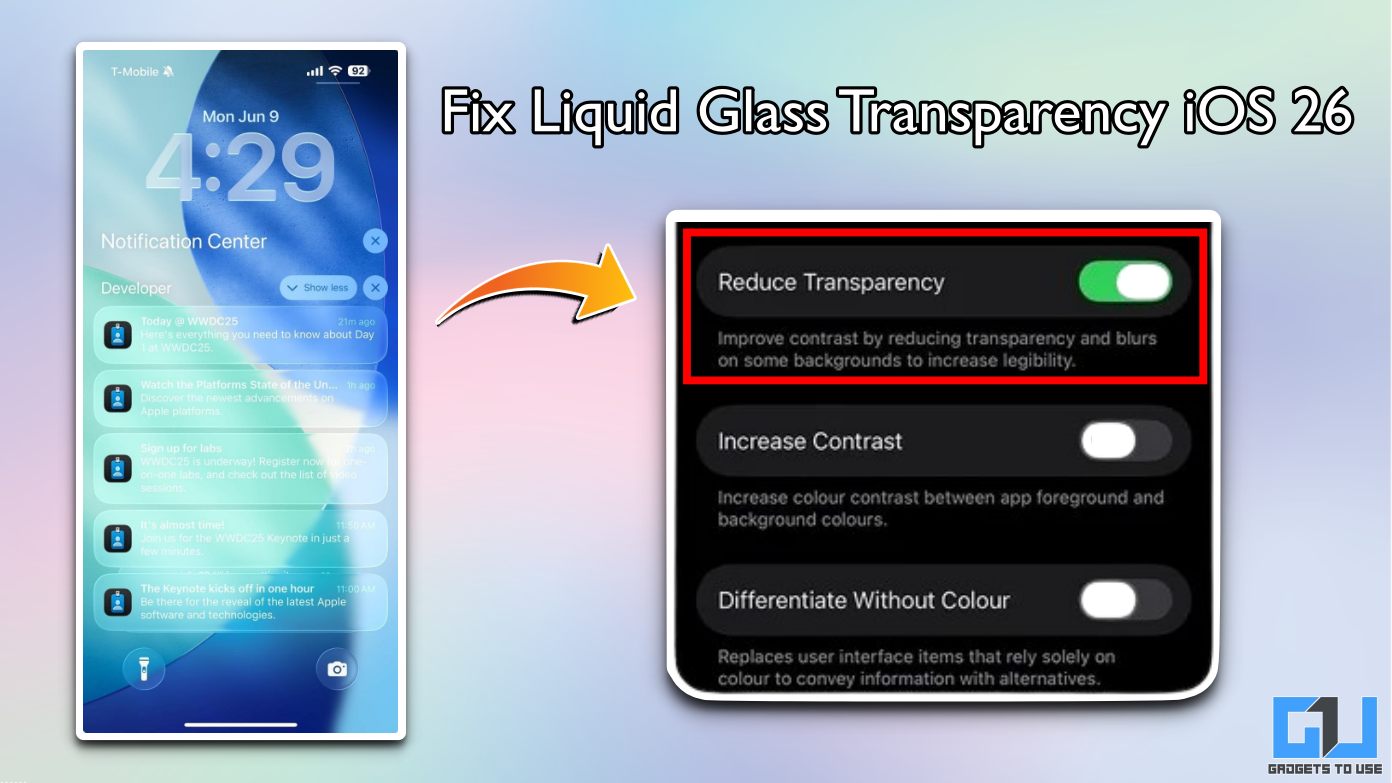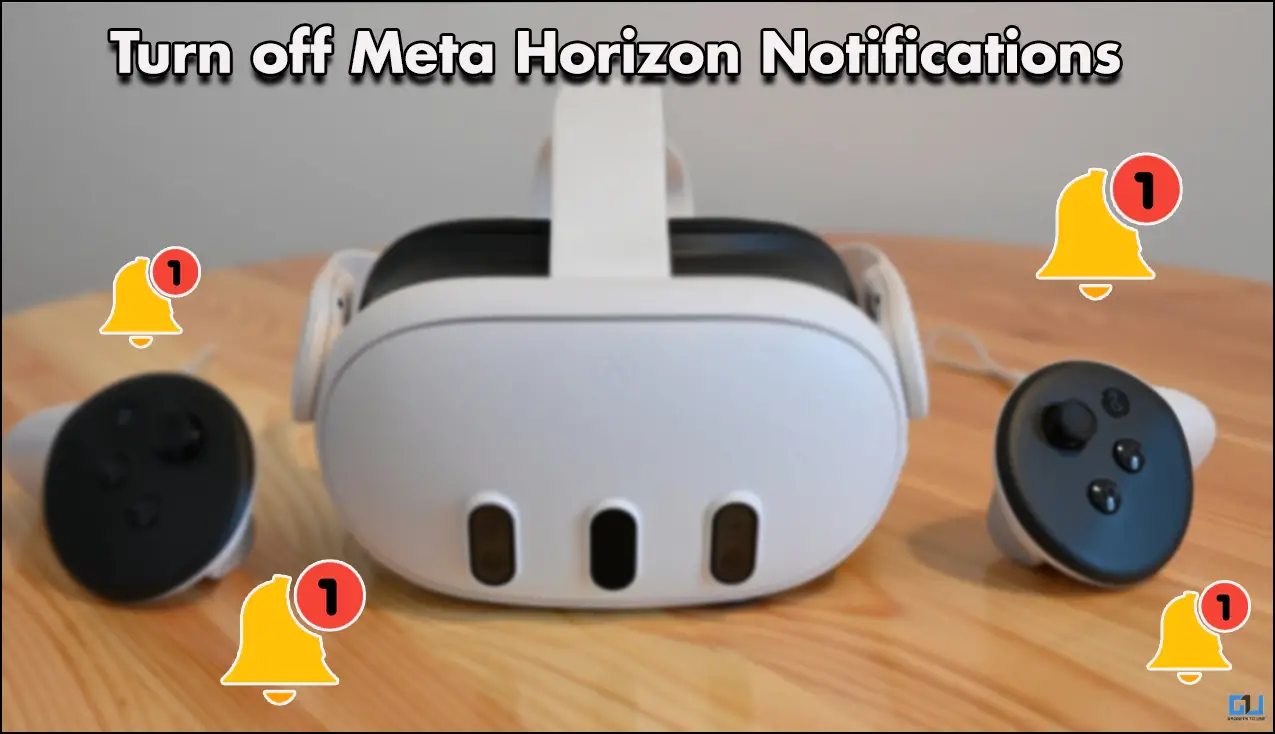Quick Answer
- However, while apps can detect Afib and complement primary aid, an ECG can better diagnose atrial fibrillation, whether performed in a hospital or via a portable device worn at home for a few days.
- The app requires a paid subscription, but you can use the free trial to detect if you have afib via an Android or iPhone, as shown below.
- While thousands of apps like Google Fit let you measure heart rate using the phone camera, only a few let you show data about irregular heart rhythm or atrial fibrillation.
The cases of irregular heartbeat, medically known as arrhythmia, are increasing rapidly among people. In the United States alone, at least 3-6 million people have atrial fibrillation. Until a few years back, it could only be detected via professional equipment. But then came smartwatches with afib detection. And now, even your smartphone can find out if you have an irregular heartbeat. Here’s how you can detect atrial fibrillation or heart rhythm problems using your phone’s camera. Read on.
What is Afib or Irregular Heart Beat?
For starters, your heart contracts and relaxes to pump blood throughout the body. A group of cells in the heart called the sinoatrial node (or SA node) sends electrical signals or impulses to coordinate these contractions.
When these signals don’t work properly, it may cause your heart to beat too fast, too slowly, or in an irregular pattern. This condition is called “Arrhythmia” or “irregular heartbeat.” Several factors, including heart disease, blood pressure, thyroid problems, medications, or age, can cause arrhythmia.
Arrhythmia can be harmless in some cases. In others, it can lead to stroke, heart failure, or even sudden death. Common symptoms include fatigue or weakness, rapid or racing heartbeat, palpitations, shortness of breath or anxiety, sweating, and chest pain.
There are four types of Arrhythmia: Atrial fibrillation, Atrial flutter, Ventricular tachycardia, and Ventricular fibrillation. Atrial fibrillation (Afib) is the most common and means irregular and rapid heart rhythm. Symptoms include racing heartbeat, palpitations, and shortness of breath.
How Do Apps Measure Heart Rate? Are they Accurate?
Have you heard of apps that measure your heart rate using your phone’s camera and flash? Well, it’s not a hoax. When you open your phone’s camera with flash enabled and keep your finger on it, you can notice that the red color dims with each heartbeat.
The light from your phone’s flashlight illuminates the blood under the skin. The blood reflects back the red light, the intensity of which changes as the blood flows. The camera detects these small changes in color that occur with each heartbeat. And this is how mobile apps measure your heart rate accurately.

While thousands of apps like Google Fit let you measure heart rate using the phone camera, only a few let you show data about irregular heart rhythm or atrial fibrillation. Since it’s possible to accurately measure heart rate using blood flow imagery from your fingertip, apps can use it to populate heart rhythm graphs and check for irregularities via distinct algorithms.
However, while apps can detect Afib and complement primary aid, an ECG can better diagnose atrial fibrillation, whether performed in a hospital or via a portable device worn at home for a few days. Treat the applications as mere indications, not a replacement for medical-grade diagnosis.
How to Detect Irregular Heartbeat (or Afib) Using Your Phone?
Now that we’re done with the basics, here are Android and iOS applications that let you detect irregular heartbeat or atrial fibrillation and measure heart rate variability using your phone’s camera.
Detect AFib Using FibriCheck App (Android, iOS)
FibriCheck is the world’s first medically certified app (CE Class IIA, FDA approved) that helps remotely detect and monitor heart rhythm disorders, including atrial fibrillation. A recent study confirms it can accurately detect irregular heart rhythms.
The app requires a paid subscription, but you can use the free trial to detect if you have afib via an Android or iPhone, as shown below:
1. Download and install FibriCheck (Play Store, App Store) on your Android or iPhone.
2. Open the app and go through the instructions and preview.
3. Create an account. You’ll be asked to enter your details, set up a biometric ID, and choose the subscription plan during the account creation process.
4. Sign up for a three-day trial. You will be charged only after the trial ends.
If you wish not to pay, we’d advise canceling the trial once you’re subscribed. You can still access the app features for the remaining trial period.
5. Once done, you’ll be redirected to the app home page. Here, click on Start Measurement under Check your heart rhythm.
6. Allow the camera access, follow the on-screen instructions, and place your finger on the rear camera. Ensure you’re relaxed with your arms resting on the table; the phone shouldn’t have any case.
7. Give it a minute to scan for atrial fibrillation or irregular heart rhythm. Avoid any movements, as it will hamper the test.
8. Once the scan is complete, mention if you face any symptoms during measurement and answer questions about the cardiovascular risk profile when prompted.
It will then show you the measurement results showing if the heart rhythm and heart rate are regular.
As per the app, all the data is analyzed by a clinically validated algorithm. But you can also tap “Request an expert review” to get your report analyzed by an expert.
Measure HRV Using Heartify App (iOS Only)
HRV is a measure of the variation in the time between heartbeats. If you have atrial fibrillation, the heart rhythm will be irregular, which can be detected by HRV.
Heartify can measure your heart rate and variability using your iPhone’s camera. It also shows you other useful metrics like stress, energy, and recovery and uses Apple Healthkit to adjust health metrics, such as HRV measurements, to your parameters. Here’s how to use it:
1. Download the Heartify app on your iPhone.
2. Open it and go through the introduction. Tap X on the top right when prompted to purchase a subscription.
3. Tap Continue further and allow permission to access the camera.
4. Place your finger on your phone’s rear camera as instructed.
5. Wait as the app continues to monitor your heart rate and the intervals between your heartbeats to determine HRV.
6. After the first scan, you’ll be prompted to connect the app to Apple Health. You can tap Later to skip.
7. Now, enter your age and gender and tap Next.
8. It will show your heart health with a score alongside your HRV in ms (milliseconds).
You can scroll down on the page to view other details like stress, tension, and energy.
You’ll also find your HRV details. An extremely high HRV (more than 100ms) and an extremely low HRV (less than 50ms) can indicate atrial fibrillation and other heart problems. If your HRV decreases over time, it may be that your atrial fibrillation is getting worse.
Other Apps to Detect Afib or Measure HRV
1. Photo Afib Detector (Lite)
It’s a basic app that detects your heart rhythm using your phone’s camera and flash. It measures RMSSD and ShE parameters, which indicate symptoms of atrial fibrillation when higher than the threshold. However, the app is very basic, has no specific backing, and hence questionable reliability.
Download: App Store
2. Welltory Heart Rate Monitor
In our testing, the app tracked the heart rate pretty accurately. It displays cardiovascular health bifurcated into stress, energy, and health-resilient metrics. The app employs a proprietary algorithm to measure HRV and stress levels and is definitely worth a try for the free version.
Download: Play Store | App Store
3. QALY: ECG Interpretations
Qaly is unlike any other app on this list. Instead of tracking data using your finger and camera, you must import ECG data from other devices like Apple Watch. The cardiographic technicians then monitor your ECGs for heart palpitations and arrhythmias like Afib, SVT, PVC, PAC, & more.
Wrapping Up
This is how you can detect irregular heart rhythms or atrial fibrillation (Afib) at home using your iPhone or Android phone. As mentioned, use mobile apps over and above the primary aid- do not rely on them solely for medical diagnosis. If you have any queries or additions to make, feel free to reach out via email or social media.
You might be interested in:
- 5 Best iPhone Features for a Healthy Lifestyle
- 3 Ways To Measure Heart Rate, Breathing on Your Phone
- 4 Ways to Add Activity Rings on Your iPhone Screen
You can also follow us for instant tech news at Google News or for tips and tricks, smartphones & gadgets reviews, join GadgetsToUse Telegram Group or for the latest review videos subscribe GadgetsToUse Youtube Channel.
